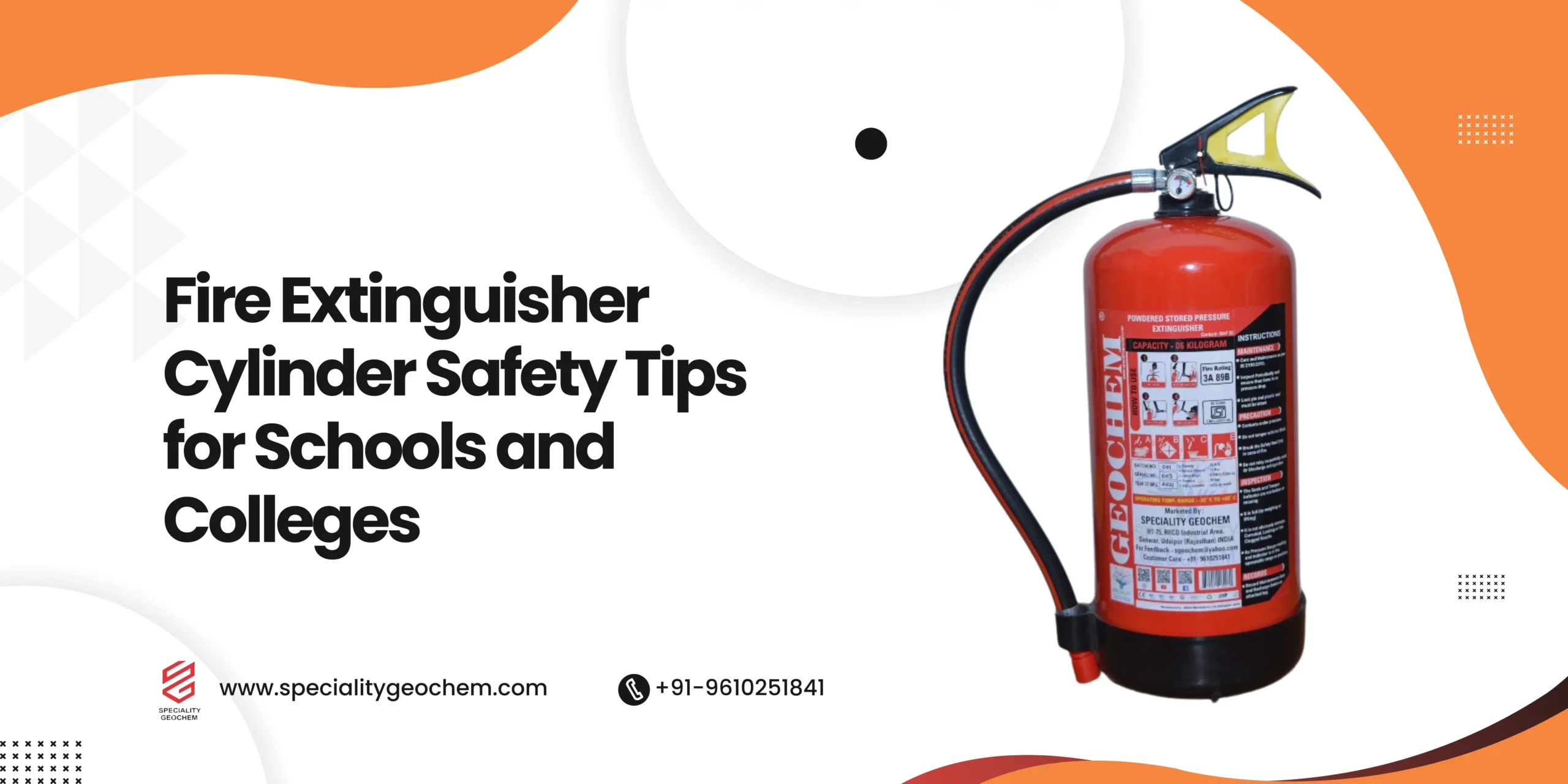Fire safety in educational institutions is not just a compliance necessity — it is an absolute moral responsibility. Schools and colleges accommodate hundreds or even thousands of students every single day. A minor oversight, a delayed response, or the absence of proper fire safety systems could result in life-threatening situations. Among all the preventive measures, installing and maintaining fire extinguishers is one of the most vital. In this blog, we will highlight essential Fire Extinguisher Cylinder Safety Tips for Schools and colleges to help administrators, facility managers, and educators ensure a safe learning environment.
Why Fire Safety is Critical in Educational Institutions
Classrooms, laboratories, computer rooms, hostels, canteens, and auditoriums carry a potential risk of fire due to electrical overloads, cooking appliances, chemicals, and paper-based materials. In schools and colleges, the movement of young students is often unplanned and panicked during emergencies. This makes prevention, preparation, and training far more important than reaction.
It is equally important to understand that installing fire extinguishers alone is not enough — their correct placement, regular maintenance, and proper training are what determine their effectiveness during a real crisis.
Types of Fire Extinguishers Recommended for Schools & Colleges
Before learning the Fire Extinguisher Cylinder Safety Tips for Schools, institutions must identify the right type of extinguisher based on their risk zones:
- ABC Dry Powder Extinguisher (Multi-Purpose): Ideal for classrooms, staff rooms, hallways.
- CO₂ Extinguisher: Best suited for computer labs and server rooms (leaves no residue).
- Foam Extinguisher: Effective for chemistry labs with flammable liquids.
- Kitchen/K Class Extinguishers: Suitable for canteens, cafeterias, and hostel kitchens.
Each type works on different fire categories (A/B/C/K), so one standard extinguisher cannot protect the entire institution.
1. Correct Placement and Visibility
One of the top Fire Extinguisher Cylinder Safety Tips for Schools is proper placement. Fire extinguishers should be:
- Mounted at visible and accessible points (not locked inside cupboards).
- Installed near lab doors, canteen entrances, and main corridors.
- Kept at a recommended height of 3.5 to 5 feet from the floor.
- Marked with glow-in-the-dark signage for night emergencies.
- Never placed behind furniture, inside storerooms, or covered with decorations.
The concept is simple — if a fire extinguisher is not seen, it will not be used in time.
2. Monthly Inspection & Annual Servicing
Fire extinguishers are useless if not maintained. Schools must follow a strict inspection routine:
- Check pressure gauge levels monthly (needle must be in the green zone).
- Ensure safety pin and seal are intact — no tampering.
- Look for rust, dents, or leakage on the cylinder.
- Record each inspection in a logbook as per safety guidelines.
- Arrange professional annual servicing twice a year during summer/winter breaks.
The most common issue during real emergencies is discovering that the extinguisher is empty or expired — regular inspection eliminates this risk completely.
3. Train Teachers, Staff & Senior Students
One of the most overlooked yet crucial Fire Extinguisher Cylinder Safety Tips for Schools is hands-on training. A fire extinguisher is effective only when someone knows how to operate it confidently.
- Conduct quarterly training workshops for teachers and staff.
- Teach the PASS method — Pull, Aim, Squeeze, Sweep.
- Educate senior students and NCC/NSS members for emergency assistance.
- Conduct mock fire drills with alarms and evacuation demonstration.
It takes just 10 seconds for a small fire to become uncontrollable — trained people save lives in these first 10 seconds.
4. Avoid Common Fire Extinguisher Mistakes
Most fire accidents become worse due to incorrect actions during panic. Schools should actively educate people about what NOT to do:
- Do not spray random fire type with wrong extinguisher.
- Do not stand too close to the flames.
- Do not leave the fire extinguisher unused for over 3 years.
- Do not assume students will act correct without guidance.
- Do not store fire extinguishers in extreme heat or humidity.
Fire safety mistakes are often caused not by lack of equipment, but lack of awareness.
5. Integrate Extinguishers with Full Fire Safety Ecosystem
Just having extinguishers is not enough — every school should adopt a complete fire safety ecosystem:
- Smoke & heat detectors in labs and libraries
- Manual fire alarms with sirens on each floor
- Fire safety signage (exit arrows, no-smoke zones, extinguisher labels)
- Fire evacuation maps near classroom doors
- Dedicated fire safety committee/team
- Emergency response tie-ups with local fire brigade
This layered setup ensures rapid detection, instant alerting, correct equipment access, and safe evacuation.
6. Fire Safety Education as Part of School Culture
Fire safety must not be a one-day drill or certificate activity. It should be:
- Part of school orientation day for new students
- Included in science & social responsibility lessons
- Added in parent orientation during PTMs
- Displayed as posters across corridors and bulletin boards
- Reinforced during National Safety Week, Fire Safety Day, and annual functions
A school that educates beyond academics is a school that prepares for life.
Conclusion
At Speciality Geochem, we understand that safety in educational institutions goes beyond compliance — it’s about safeguarding lives. By adopting effective Fire Extinguisher Cylinder Safety Tips for Schools, institutions create an environment where students, teachers, and staff feel secure. Regular inspections, strategic placement, and hands-on training empower schools to respond swiftly in emergencies. Integrating these measures into a comprehensive safety plan not only prevents accidents but also fosters a culture of preparedness and responsibility. Choosing the right fire safety solutions ensures that learning spaces remain protected, allowing education to thrive without compromising safety.

